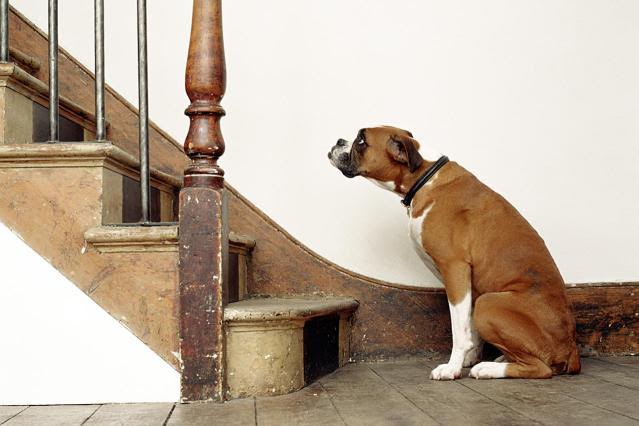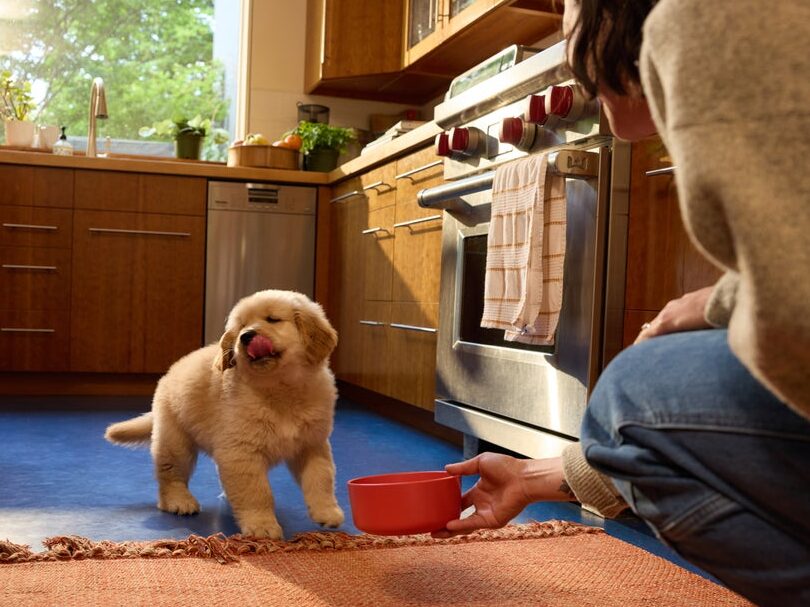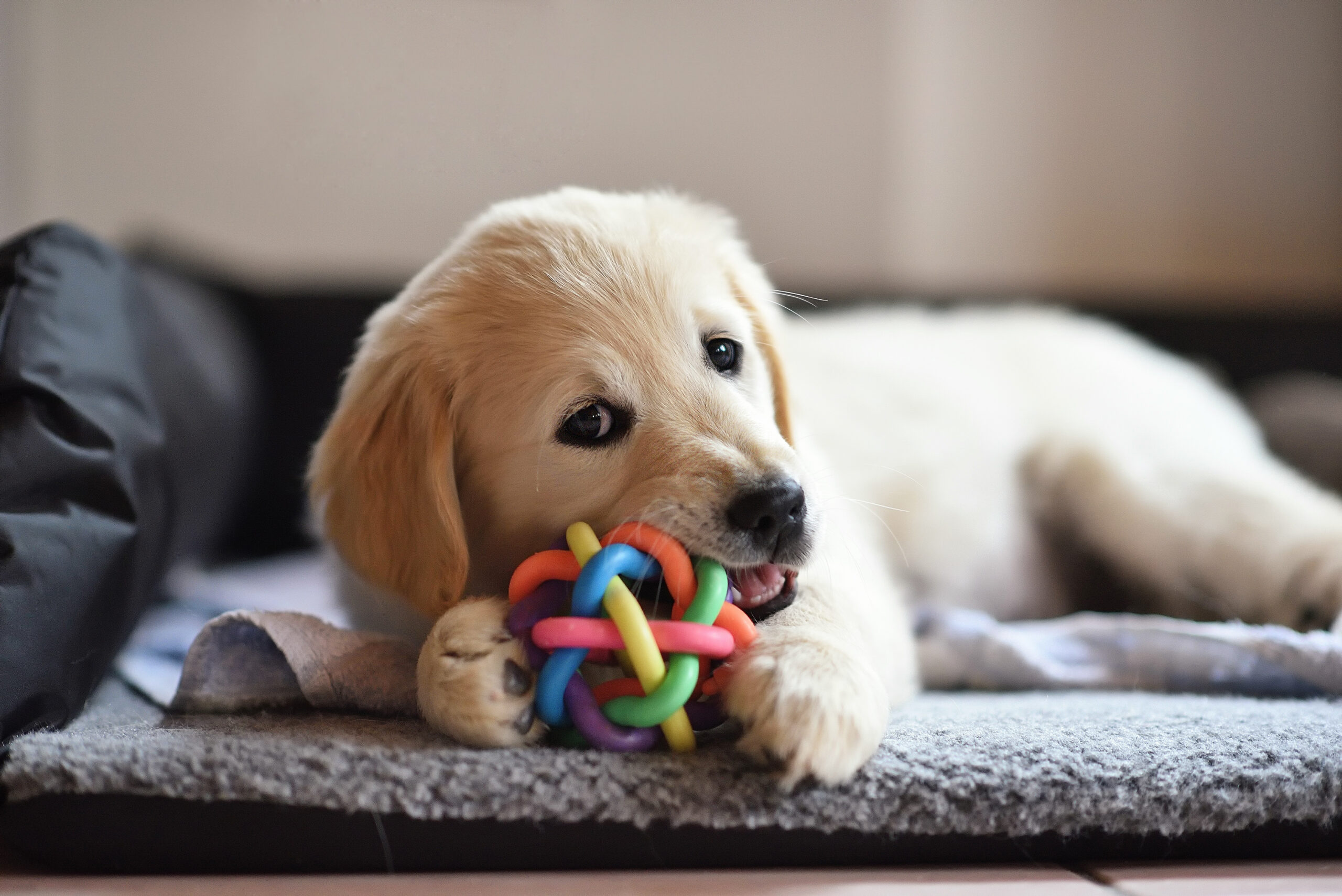Hey Ollie blog readers! We’re offering you an exclusive 60% OFF your starter box! Try now!
In our inaugural "Ask a Trainer" column, Ollie asks certified trainer Rachel Cohen Maso CPDT-KA, of Brooklyn Dogtime, how to help an especially panicky pup get over his fear of stairs.
Ollie: My four-year old lab has been afraid of stairs for as long as I can remember. I don’t think he ever had a "traumatic" experience with stairs, though we have moved a lot and our first few apartments when we had him were on the ground floor. It’s particularly problematic when the staircase has slats and is outside, he will not go up or down them! Why is he so afraid, and what can I do to help him get over his fear?
Rachel: Carry your dog! Just kidding. Generally as trainers we ask ourselves, “Is there a way to avoid the fear altogether?" We all lead busy lives and if the problem isn’t something you run into often it might not be worth putting a huge amount of time and effort into. Of course, if you have a 50 pound dog, carrying your pup up or down the stairs on a regular basis is unrealistic. This means it’s time to start training your pup.
First, let’s address why your dog could be so scared: Puppies have what is called a "socialization" period from about 4 weeks to 16 weeks of age, when pleasurable experiences get habituated. On the other hand, they can become easily traumatized if they have negative exposure to things. For example, if a puppy falls down the stairs, they could develop a fear—or even the surface of the stairs, like tile, could freak them out wherever they are. At the same time, many of dogs’ lifetime fears actually stem from lack of experience with things. If dogs are never exposed to something during their socialization period, they don’t adapt the ability to handle it as adults.
So what to do? First, take it slow! Forcing your dog to face his fears head on is likely to backfire. Would you put a leash on your 2 year old and pull them up the stairs while they panicked? If that sounds wrong to you, don’t do it to your dog. It’s your job as a pet parent to help your dog learn that stairs aren’t so bad—in fact good things happen when you do the stairs!
For starters, dogs have less binocular vision than humans. So slat stairs probably appear to have terrifying gaping holes in them! There isn’t much you can do about this outside of your home, but if you have these types of stairs in your house, create a visual barrier blocking the holes. The surface itself could also be an issue: Because of their center of gravity, it’s very hard for dogs to find their footing on slippery surfaces like wood, metal, and marble. This is where carpet square samples (which are removable and travel well!) and other gripping products can be your friend. Finally, taking the leash off or at least pressure off the leash might help. Just like humans, dogs are more often comfortable when they are in full control of their bodies.
Now to the real training! Your dog’s fear of the stairs is an emotional response—this means that no matter how many commands you throw at your dog, if you don’t address his internal conflict, he’ll never get comfortable. First, break going up the stairs into tiny accomplishable tasks. Can your dog approach a staircase without starting to shake? No? Well then that’s your starting point. Right now your dog’s automatic response to the sight of stairs is fear, so your task is to get your dog feeling relaxation and maybe even excitement when he sees them. This process is called ‘counter-conditioning’. When your dog sees a staircase, make sure something good happens (this is your cue to give your dog some amazingly delicious treats!) After a number of repetitions your dog should be relaxed and waiting for something good to happen when the stairs appear in front of him. Your next step is to approach the stairs and work towards getting the same response, then for the first step and so on up the staircase. Do just a little practice each day making sure to always end your training on a happy note!
It’s tempting to bribe your dog by holding a treat at the top of the stairs and calling to them, but this is unlikely to help them tackle their fears. Your dog might climb the stairs desperate for the treat and panic half way up becoming even more fearful. Food is a great dog training tool but it can be used the wrong way. If you think you need someone to hold you accountable or your dog’s fear is extreme then hire a professional dog trainer to help you along the way!
The Ollie blog is devoted to helping pet parents lead healthier lives with their pups. If you want to learn more about our fresh, human-grade food, check out MyOllie.com.
Tagged As:

The nutrition your dog needs,
the food they want.

Enjoying our articles? Subscribe our Newsletters and get new articles directly to your inbox
You might also like
13 May 2025
8 MINS READ
Puppy Training Guide & Behavior Timeline
Bringing home a puppy is pure magic. It’s also pure chaos—tiny teeth, zoomies, accidents in the house, and moments that make you wonder if you’re raising a future genius or a tiny tornado. …
by Ollie Pets
10 May 2025
12 MINS READ
New Puppy Checklist: Guide To Prepare For A New Dog
Bringing home a new puppy? This checklist covers everything new dog owners need—from essential supplies to training, feeding, and first vet visits.
by Ollie Pets
3 April 2025
9 MINS READ
Home Remedies for Fleas on Dogs: 10 Natural Ways That Actually Work
Wondering what kills fleas on dogs instantly and naturally? If your pup is scratching like crazy, it may be time to take action. In this guide, we’ll show you the most effective home remedies for…







